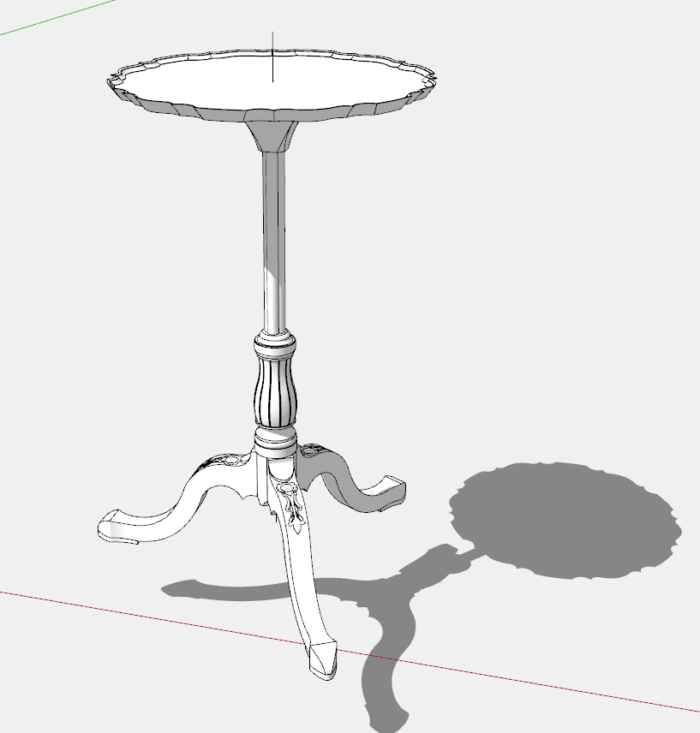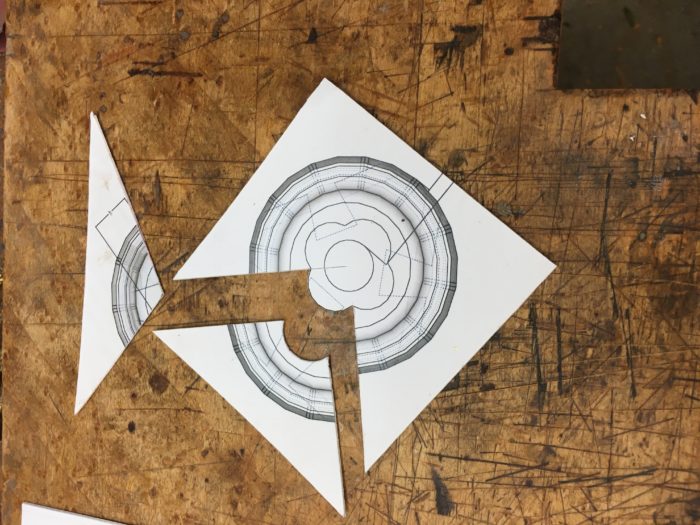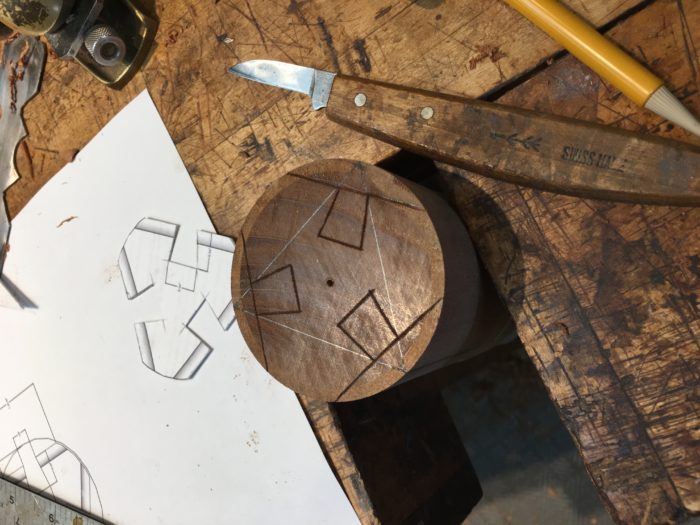Conquering Details in a Tripod Table
SketchUp helps create Tim Killen's full-size templates for a Chippendale classic
It’s a small project but full of interesting and challenging details. I’m referring to a Chippendale Tripod Table, English 1755-1770. We’ve selected this piece (see picture below) for next semester’s school project, and I’m working the prototype this summer. Note the pie-crust top, the shaped turning, and cabriole legs with acanthus carving on the knee.

I began working the turned Post or Column, the upper portion of which is a cluster of columns, quatrefoil in plan. Here is the top view of the Post in SketchUp with the quatrefoil shape shown shaded.

After turning the upper shaft portion of the Post, I used a hand-made scratch stock to shape the quatrefoil. SketchUp produced the two shapes required for the scratch stock as shown below. A “V” cut was used first to create the groove, then the “Cove” shape accomplishes the round-over.

The scratch stock is made from a short piece of an old bandsaw blade. I used the template to mark the shapes on the metal, and then filed away the waste. In the picture below I’m honing the steel shape with sharpening stones. The “V” cut is on the left, and the “Cove” on the right in the picture below.

The finished quatrefoil shape is shown below after being scraped with the two shapes of the scratch stock.
I’ve added a video later in this blog, showing the process I used in the shop to produce the quatrefoil.

The bulbous section of the turning is also shown in the above photo. It’s shape is shown below in a SketchUp cross section.

Again I used the full size SketchUp templates to shape the Scratch Stock which then shaped the mahogany post.
Below is a Scene in SketchUp showing how the full size templates are used to shape the one piece of bandsaw steel required to work the mahogany Post. All four edges are used – an efficient use of the one-piece steel.

Here is a photo of the bulbous section shaped out with beads and cove.

The bottom of the Post is also a complicated shape, and the SketchUp templates enable the precise markup and shaping. This section of the Post provides the strong dovetail connection of the tripod cabriole legs. Below is a SketchUp parallel projection of the bottom face of the Post.

The full size template cut-out (made from the SketchUp view above) is on the bench to the left of the post. It was used to mark out the Post’s bottom face, first with pencil. Then a knife was used to trace out the pencil markings.

And finally cutting the dovetail sockets for the cabriole legs.
Here is a short video on cutting the quatrefoil.
Tim
@KillenWOOD
Fine Woodworking Recommended Products

Ridgid EB4424 Oscillating Spindle/Belt Sander
























Log in or create an account to post a comment.
Sign up Log in